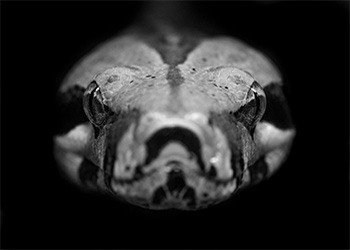Ted Talks - ML- Predicting Performing Videos
AAAS24
April 5, 2022
TED Talks is a fascinating source of content. Kaggle offers a dataset on TED Talks posted on the website. As a TED Talk fan, I wanted to understand the type of resources available.
This is the fourth article in a series of a larger project that includes several data science techniques, including: scrapping a website, data wrangling, data classification techniques (PCA and clustering) and Machine Learning techniques. Here are the links to all the articles in this series:
- 1 - Web Scrapping
- 2 - Preprocessing
- 3 - PCA and Clustering
- 4 - Predicting Performing Models
- 5 - Recommendation Engine
To learn more about the full code on this project, please visit the code library. You can also use this Colab notebook to follow along.
Predicting model for if a video will perform well
The goal is to predict a “good performance” for a given video, when we are defining ‘good performance’ as at least 75% percentile.
We run 4 different models:
| Model | Y_Prediction |
|---|---|
| Logistic Regression | 0.61 |
| Simple Tree | 0.61 |
| Random Forest | 0.67 |
| X-Boost | 0.67 |
Based on the Best Performing Models “XG-Boost”, the key features are:
-
Date related variables, where we can see that for well performing videos:
- there were more videos performing better with 5 min duration. Underperformed videos tended to last longer
-
Well performing videos tended to be released during spring
-
Keywords related to:
- Personal Growth: personality, goals, motivation, collaboration, communication, humanity, self, performance, creativity
- Work: business, work-life balance , productivity,
- Global issues: culture, politics, climate change, planets, gender, virus
- Other topics: music, sports, philosophy, art, health
Models
Preparing the data
To be able to utilize the models below, the data must be clean of NaNs, numerical, balanced, standardized and split into training, test and validation. In this section we show the steps in code we utilized to achieve the state used for the models.
Note: For readability purposes we show the output of Jupyter notebook staring with “>”
#verifying no NAN in data feeding model
df[df.likes.isnull()==True]
> 0 rows × 363 columns
#define target
#we define TARGET a well performing video if it is above 75% percentile. So the model should predict if a video will#perform above 75% percentile
threshold= np.percentile(df.likes, 75)
#create target column
df['target']=[1 if x>threshold else 0 for x in df.likes]
#drop multicolinearity columns
data=df.drop(['likes', 'views'], axis=1)
#drop text columns
data=data.drop(['author', 'title', 'description_1', 'description_2', 'keywords2'], axis=1)
#Balance data
data.target.value_counts()
> 0 4098
1 1342
Name: target, dtype: int64
positive_labels = data[data.target==1]
num_positive_labels = positive_labels.shape[0]
num_positive_labels
>1342
negative_labels = data[data.target==0].sample(num_positive_labels)
negative_labels.shape
>(1342, 357)
balanced_data = positive_labels.append(negative_labels)
balanced_data.target.value_counts()
>1 1342
0 1342
Name: target, dtype: int64
## Splitting data into test splits
y = balanced_data.pop('target')
X = balanced_data
X_train, X_valid, y_train, y_valid = train_test_split(X, y, test_size = 0.3)
X_valid, X_test, y_valid, y_test = train_test_split(X_valid, y_valid, test_size = 0.33)
Logistic Regression
# fit a model
clf = LogisticRegression(penalty='l2').fit(X_train, y_train)
# predict probabilities
pred_reg = clf.predict_proba(X_test)[:, 1]
Decision Tree
from sklearn.tree import DecisionTreeClassifier
dt_model = DecisionTreeClassifier(max_depth=10)
dt_model = dt_model.fit(X_train,y_train)
pred_dt = dt_model.predict_proba(X_valid)[:, 1]
Random Forest
from sklearn.ensemble import RandomForestClassifier
rf_model = RandomForestClassifier()
rf_model = rf_model.fit(X_train, y_train)
pred_rf = rf_model.predict_proba(X_valid)[:, 1]
XGBoost
#code to fix error taken from: https://stackoverflow.com/questions/43579180/feature-names-must-be-unique-xgboost
X_train = X_train.loc[:,~X_train.columns.duplicated()]
X_valid = X_valid.loc[:,~X_valid.columns.duplicated()]
from xgboost import XGBClassifier
xgb_model = XGBClassifier()
xgb_model = xgb_model.fit(X_train, y_train)
pred_xgb = xgb_model.predict_proba(X_valid)[:, 1]
Comparing Models
def create_roc_plot(name, predictions):
if name == 'Logistic':
auc = roc_auc_score(y_test, predictions).round(2)
fpr, tpr, _ = roc_curve(y_test, predictions)
else:
auc = roc_auc_score(y_valid, predictions).round(2)
fpr, tpr, _ = roc_curve(y_valid, predictions)
plt.figure(figsize=(5, 4))
plt.plot([0, 1], [0, 1], linestyle='--') # plot horizontal line
plt.plot(fpr, tpr, label='{} AUC = {}'.format(name, auc)) # plot the roc curve for the model
plt.xlabel('FPR')
plt.ylabel('TPR')
plt.legend(loc='lower right') # show the legend
plt.show() # show the plot
return None
create_roc_plot('Logistic', pred_reg)
create_roc_plot('Simple Decision Tree', pred_dt)
create_roc_plot('Random Forest', pred_rf)
create_roc_plot('XGBoost', pred_xgb)
| Logistic Regression | Simple Decision Tree |
|---|---|
 |
 |
| Random Forest | XGBoost |
|---|---|
 |
 |
Given that Random Forest & XGBoost tends to outperform the other models, let’s see the Feature importance on these two models:
#XGBoost - All Features to observe the curve
from xgboost import plot_importance
plot_importance(xgb_model)
plt.show()
#XGBoost - Top Features
df_graph=(pd.Series(xgb_model.feature_importances_, index=X.columns.values)
.sort_values(ascending=False)
.iloc[:40]
.sort_values(ascending=True)
.plot.barh()
)
#improving labels
ax.set_xlabel('Importance')
ax.set_ylabel('Features ')
#styling grid, leyend and title
plt.title('Feature Importance', ha='center', fontsize='x-large')
ax.set_facecolor("white")
plt.grid(axis='y', color='black', alpha=.2)
| Total Features | Top Features |
|---|---|
 |
 |
#Random Forest - All Features to observe the curve
from sklearn.inspection import permutation_importance
rf_model.feature_importances_
plt.barh(X.columns.values, rf_model.feature_importances_)
#Random Forest - Top Features
(pd.Series(rf_model.feature_importances_, index=X.columns.values)
.sort_values(ascending=False)
.iloc[:10]
.plot.barh()
)
| Total Features | Top Features |
|---|---|
 |
 |
Based on these features, we can identify some keywords and variables that are worth analyzing further.
Understanding date_recorded_year & date_released_year
df2=pd.concat([X,y], axis=1)
df_graph=df2.loc[:,['date_released_year', 'target']]
dfgraph_y=df_graph[df_graph.target==1]
dfgraph_n=df_graph[df_graph.target==0]
#improving graph
fig, ax = plt.subplots(nrows=1, ncols=1, figsize=(13,5), sharex=True)
# #plotting first histogram
ax=(dfgraph_y.groupby(['date_released_year'])
.agg({'target':['sum']})
.plot( kind = 'bar',alpha=0.6, ax=ax,)
)
# #plotting second histogram
ax=(dfgraph_n.groupby(['date_released_year'])
.agg({'target':['count']})
.plot( kind = 'bar',alpha=0.5, ax=ax, color='#76725e')
)
# # #improving labels
ax.set_xlabel('')
ax.set_ylabel('Count Videos ')
#styling grid, leyend and title
plt.title('Released Year by Performing and Not Performing Videos', ha='center', fontsize='xx-large')
plt.legend(["Performing", "Not Performing"], loc='upper center',ncol=2, bbox_to_anchor=(0.5, 1.1), borderaxespad=2.6, facecolor="white")
ax.set_facecolor("white")
plt.grid(axis='y', color='black', alpha=.2)

Understanding date_released_month
df2=pd.concat([X,y], axis=1)
df_graph=df2.loc[:,['date_released_month', 'target']]
dfgraph_y=df_graph[df_graph.target==1]
dfgraph_n=df_graph[df_graph.target==0]
#improving graph
fig, ax = plt.subplots(nrows=1, ncols=1, figsize=(13,5), sharex=True)
# #plotting first histogram
ax=(dfgraph_y.groupby(['date_released_month'])
.agg({'target':['sum']})
.plot( kind = 'bar',alpha=0.6, ax=ax,)
)
# #plotting second histogram
ax=(dfgraph_n.groupby(['date_released_month'])
.agg({'target':['count']})
.plot( kind = 'bar',alpha=0.5, ax=ax, color='#76725e')
)
# # #improving labels
ax.set_xticks(ticks=range(0,12,1))
ax.set_xticklabels(['Jan', 'Feb', 'Mar', 'Apr', 'May', 'Jun', 'Jul', 'Ago', 'Sep', 'Oct', 'Nov', 'Dec'])
ax.set_xlabel('')
ax.set_ylabel('Count Videos ')
#styling grid, leyend and title
plt.title('Released Month by Performing and Not Performing Videos', ha='center', fontsize='xx-large')
plt.legend(["Performing", "Not Performing"], loc='upper center',ncol=2, bbox_to_anchor=(0.5, 1.1), borderaxespad=2.6, facecolor="white")
ax.set_facecolor("white")
plt.grid(axis='y', color='black', alpha=.2)

NEXT STEP
Please read the next article of this series on ML - Recommendation Engine

